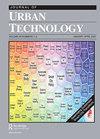从可用数据到可操作数据:对开放数据的专家和重用者观点的探索
IF 4.6
3区 经济学
Q1 URBAN STUDIES
引用次数: 2
摘要
在巴斯克政府开放数据平台启动10年后,开放数据的重复利用水平仍然很低,而出人意料的是,2019冠状病毒病大流行来袭。突然之间,以公开数据为基础的图表和信息图表成了通用语言;不仅是专家,普通市民也需要可理解的数据来做决定。禁闭期间的座右铭是“让我们把曲线变平”。本文依赖于对为期三天的研讨会的参与者观察,对专家和开放数据重用者的访谈(N=15),以及对依赖开放数据的城市项目的分析(N=78)。从2019年11月27日至2021年2月17日,在第一波COVID-19大流行之前和第三波大流行之后进行了数据收集,使研究人员能够进行比较。我们发现公民正在推动可操作的开放数据;也就是说,数据嵌入了使其有用和可用的属性。这包括整合数据素养和公民的投入,并组建政府内外的跨学科团队。本文提出了可操作数据的定义,它可以扩展到其他现实。本文章由计算机程序翻译,如有差异,请以英文原文为准。
From Available to Actionable Data: An Exploration of Expert and Re-users Views of Open Data
ABSTRACT The level of open data re-utilization was still low 10 years after the launch of the Basque Government’s open data platform, when, unexpectedly, the COVID-19 pandemic struck. Suddenly, charts and infographics—fed on open data—were lingua franca; not only experts but also ordinary citizens were demanding understandable data to make decisions. The motto during the confinement was “let’s flatten the curve.” This article relies on participant observation of a three-day workshop, interviews with experts and open data re-users (N=15), and an analysis of urban projects that rely on open data (N=78). Data collection was conducted before the first wave and after the third wave of the COVID-19 pandemic, from November 27, 2019, to February 17, 2021, allowing researchers to make comparisons. We find that citizens are pushing for actionable open data; that is, data embedding the attributes that make them useful and usable. This includes integrating data literacy and citizens’ inputs and forming interdisciplinary teams of people inside and outside the government. This article proposes a definition for actionable data, which can be scalable to other realities.
求助全文
通过发布文献求助,成功后即可免费获取论文全文。
去求助
来源期刊

Journal of Urban Technology
URBAN STUDIES-
CiteScore
8.50
自引率
4.20%
发文量
42
期刊介绍:
The Journal of Urban Technology publishes articles that review and analyze developments in urban technologies as well as articles that study the history and the political, economic, environmental, social, esthetic, and ethical effects of those technologies. The goal of the journal is, through education and discussion, to maximize the positive and minimize the adverse effects of technology on cities. The journal"s mission is to open a conversation between specialists and non-specialists (or among practitioners of different specialities) and is designed for both scholars and a general audience whose businesses, occupations, professions, or studies require that they become aware of the effects of new technologies on urban environments.
 求助内容:
求助内容: 应助结果提醒方式:
应助结果提醒方式:


